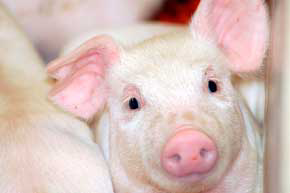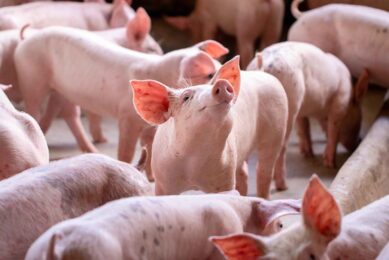Lab develops test for Porcine Epidemic Diarrhea Virus

After the recent spate of PEDV outbreaks, the Animal Disease Research and Diagnostic Laboratory (ADRDL) in South Dakota State University has developed tests to detect Porcine Epidemic Diarrhea Virus in pigs.
In recent weeks, swine herds in several midwestern states have experienced signs of illness attributed to this emerging virus. Until now, PEDV had not previously been detected in the United States. This virus causes diarrhea and dehydration in pigs of all ages, but is most severe in young baby pigs. In this age group, mortality has been reported to be as high as 40% in some herds.
Diagnostic lab scientists at the ADRDL, working together with other midwestern diagnostic laboratories, have developed a molecular test that detects the presence of PEDV in stool samples or tissues from affected pigs. The test can be run in conjunction with a molecular test that detects Transmissible gastroenteritis (TGE) virus, which is a closely related but separate virus that can cause many of the same signs in swine herds.
Swine producers who detect signs of diarrhea in their herds should contact their veterinarian to coordinate sample submission for PEDV testing. Once the samples are received at the ADRDL, results generally are available the next working day. The results can be accessed by the veterinarian 24 hours a day through the ADRDL’s secure, password-protected web reporting site.
SDSU scientists are working on this emerging disease threat from many different angles, which will eventually mean the development of additional diagnostic techniques, which will help swine producers more rapidly and more conveniently detect the spread of the virus through their herds. These additional tests will include blood tests to detect exposure to the virus as well as methods to “fingerprint” individual virus isolates.
Information about PEDV is rapidly changing. Swine producers who suspect the presence of the virus in their herd should contact their veterinarian for information about treatment and methods to limit the spread of the virus between groups on the farm and between farms.
Source: National Hog Farmer











